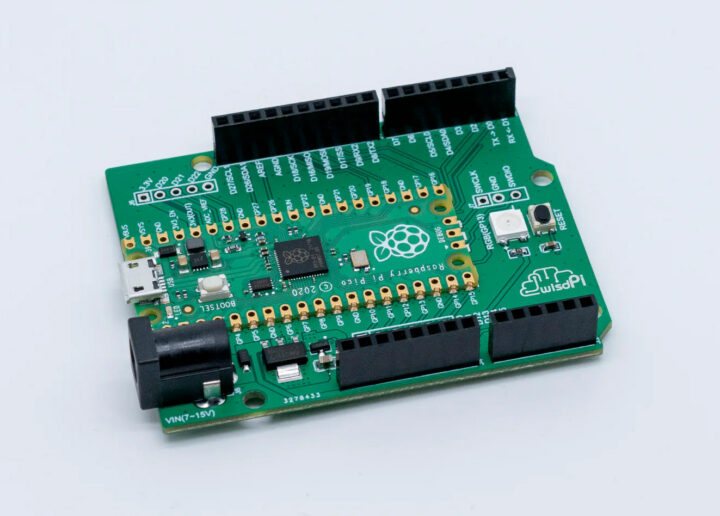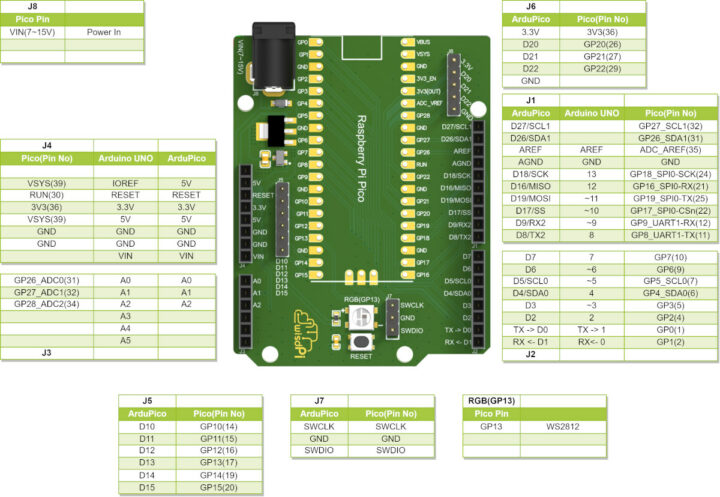
WisdPi ArduPico is an Arduino UNO-shaped baseboard designed for the Raspberry Pi Pico and compatible boards that enables makers to reuse most 3.3V Arduino shields available on the market and also adds for few I/Os and features.
ArduPico specifications:
- Compatible board – Raspberry Pi Pico, Pico H, Pico W, Pico WH, and other Pi Pico compatible board solderable using through holes or castellated holes
- Expansion
- Arduino UNO header compatible with a wide range of shields
- 5-pin and 6-pin headers for additional GPIOs and 3.3V, GND
- All Raspberry Pi Pico GPIOs are exposed
- 3.3V only, no 5V tolerant
- Debugging – SWD header
- Misc – Pico RESET key, WS2812 RGB LED
- Power Supply – 7 to 15V DC via DC jack
- Dimensions – 68.6 x 53.3 x 11.6 mm (Arduino UNO form factor)
- Weight – 18 grams
Compatibility with the Arduino UNO is not 100% percent as, for instance, only three analog input pins are exposed against six for the Arduino UNO, but the ArduPico also gains some extra GPIOs and an I2C interface, as well as an RGB LED.
It’s entirely a hardware project, and you’d just (re-)use MicroPyhon, C/C++, or another language with support for the Raspberry Pi Pico/RP2040. Yet, there’s still some documentation for the board including the pinout diagram above. I would have expected others like Waveshare and the likes to have come up with an Arduino UNO carrier board for the Raspberry Pi Pico ideas, but it’s the first one I can find anyexcept for some DIY projects.
wisdPi sells the ArduPico baseboard on their own store for $9.99 with Pi Pico board. It’s the first time I hear about the wisdPi, and it’s a relatively new company (the domain was registered in 2019), but I can see they also have some other Raspberry Pi-based products such as a Mini Router based on the RPi CM4 module, and two HAT expansion boards (RS232 and RS485) for Raspberry Pi SBCs.

Jean-Luc started CNX Software in 2010 as a part-time endeavor, before quitting his job as a software engineering manager, and starting to write daily news, and reviews full time later in 2011.
Support CNX Software! Donate via cryptocurrencies, become a Patron on Patreon, or purchase goods on Amazon or Aliexpress





